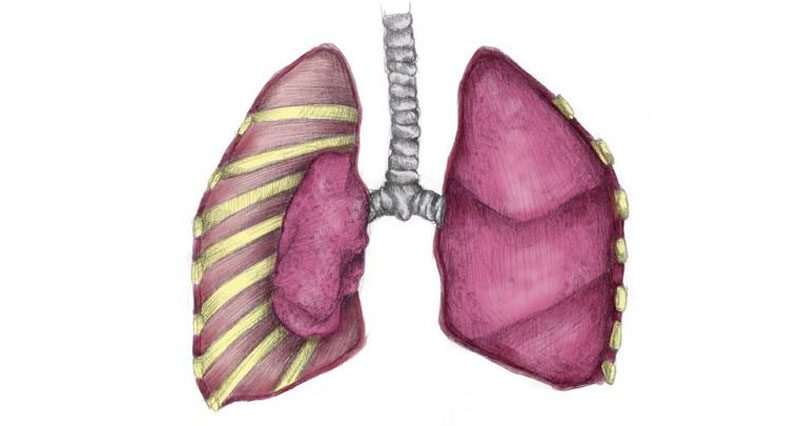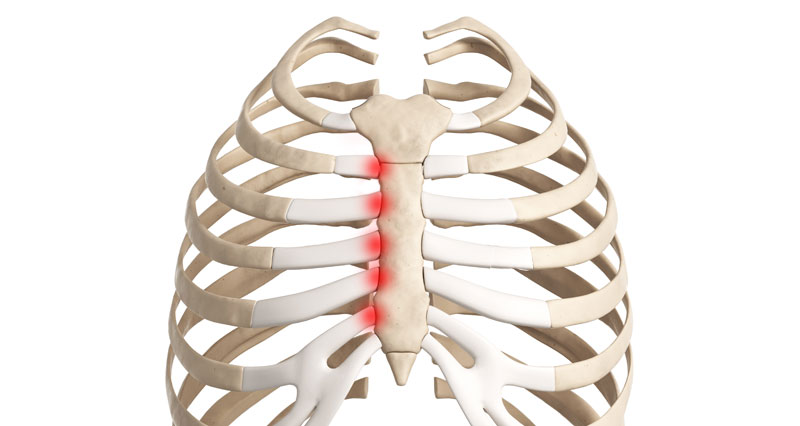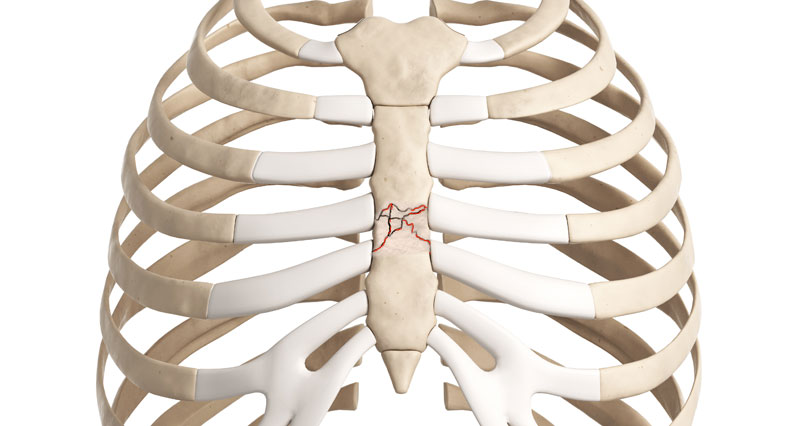A collapsed lung is also known as a pneumothorax. It occurs when there is a build-up of air in the space between the lungs and the rib cage. Here we explain the symptoms, causes, and treatment for a collapsed lung.
Symptoms
- Collapsed lung symptoms include sharp chest pain, which is worse when breathing deeply.
- The patient will feel tightness in the chest and shortness of breath.
- A dry cough may be experienced.
- In more severe cases rapid heart rate, fatigue and a bluish tint to the skin and lips may be seen.
- The severity of symptoms depends on how much air has entered the pleural space (between the ribs and lungs).
- In the most severe case, known as a tension pneumothorax, the air which has entered cannot escape at all. This results in symptoms getting rapidly worse.
- If you suspect a Collapsed lung, seek medical attention immediately.
What is a Collapsed lung?
A pneumothorax or collapsed lung occurs when there is a build-up of air in the space between the lungs and the rib cage. This space is known as the pleural space. As a result, pressure on the lung is increased, therefore, it cannot expand as much as it usually can.
A collapsed lung will usually only occur on one side at a time. There are two types:
Traumatic Pneumothorax
- As the name suggests, occurs as a result of a traumatic injury, allowing air from outside the body into this space.
- This may occur with injuries such as broken ribs or gunshot or stab wounds.
- It may also happen as a complication following chest surgery.
Spontaneous Pneumothorax
- Occurs for no apparent reason.
- What happens is that an air sack on the surface of the lungs called a Bulla, bursts.
- The bulla may burst during heavy exercise or certain activities including scuba diving, flying or hiking at altitude.
- Respiratory diseases such as Asthma and COPD or chronic obstructive pulmonary disease also increase the risk.
Treatment
- Following a lung X-ray to confirm the diagnosis, the appropriate treatment is undertaken, depending on the severity of the condition.
- Minor cases usually heal on their own in a few days.
- The gap through which the air entered the space heals and the body absorbs the excess air. Extra Oxygen may be needed.
- More major injuries require a chest drain to be inserted into the pleural space. This allows the air to disband.
- The drain may be kept in place for anything from a couple of days to a few weeks, depending on the healing time for the injury.
- In repeated cases, a procedure known as pleurodesis may be performed. This uses a special chemical to stick the two layers of lung lining together, so air cannot get in between them.








